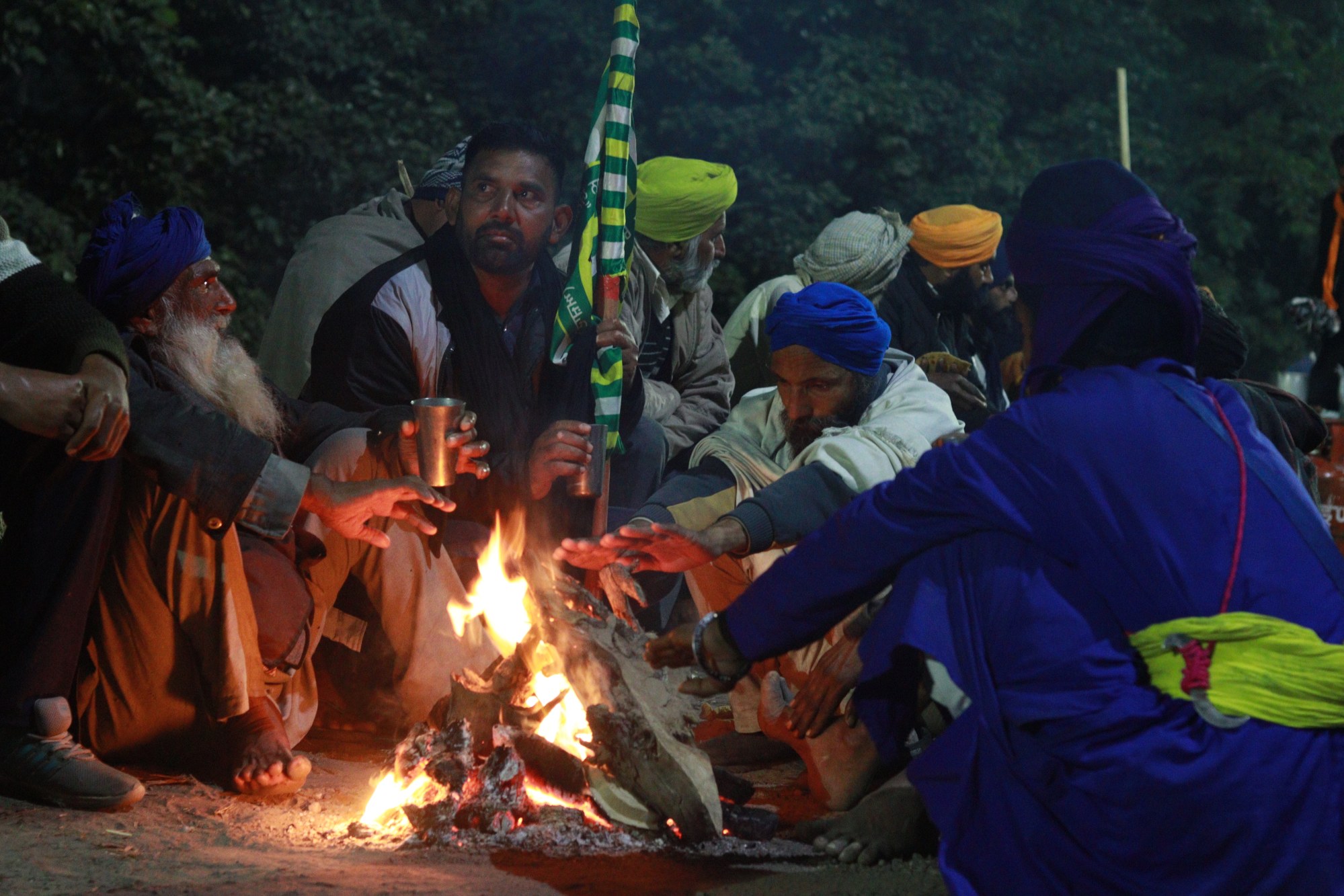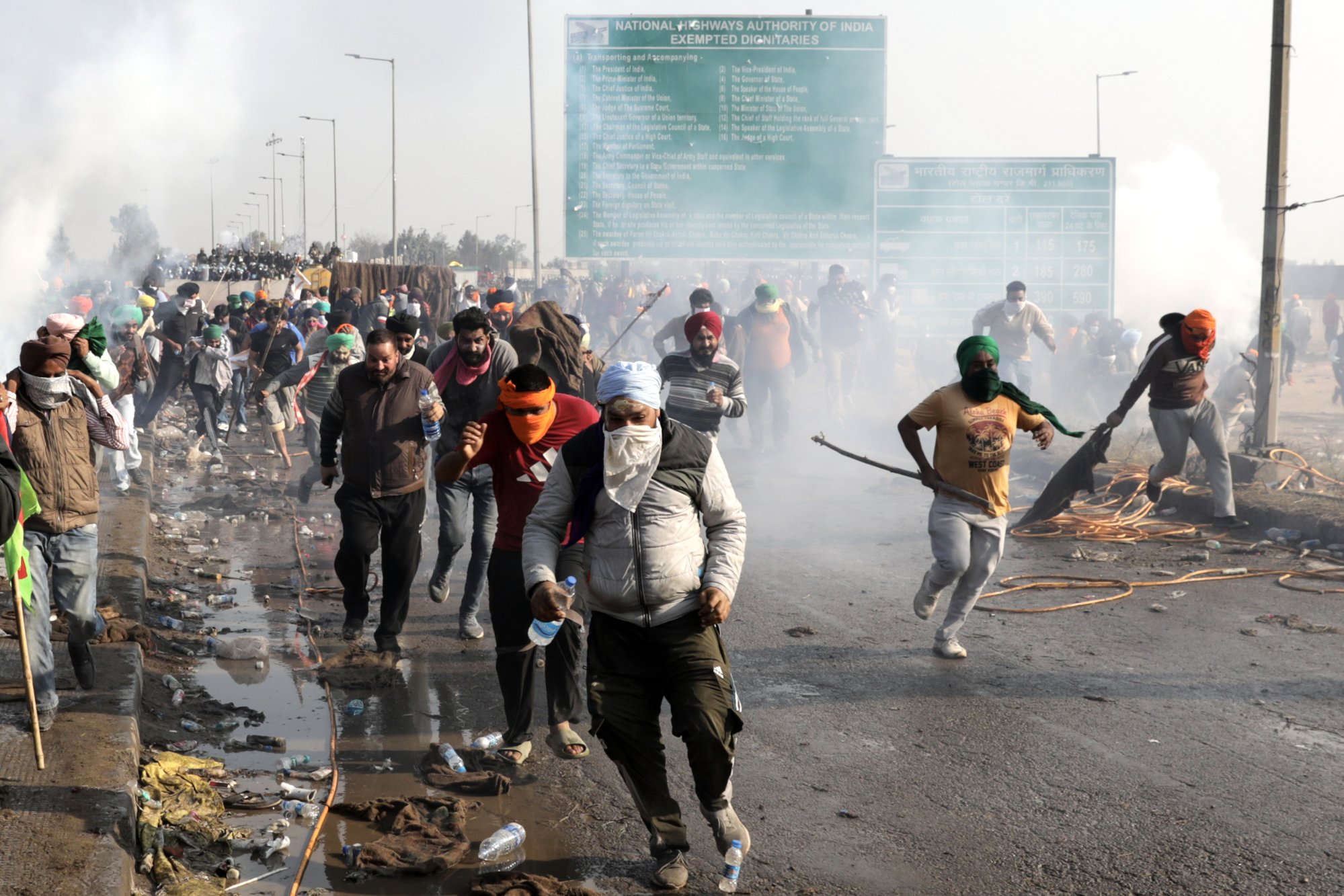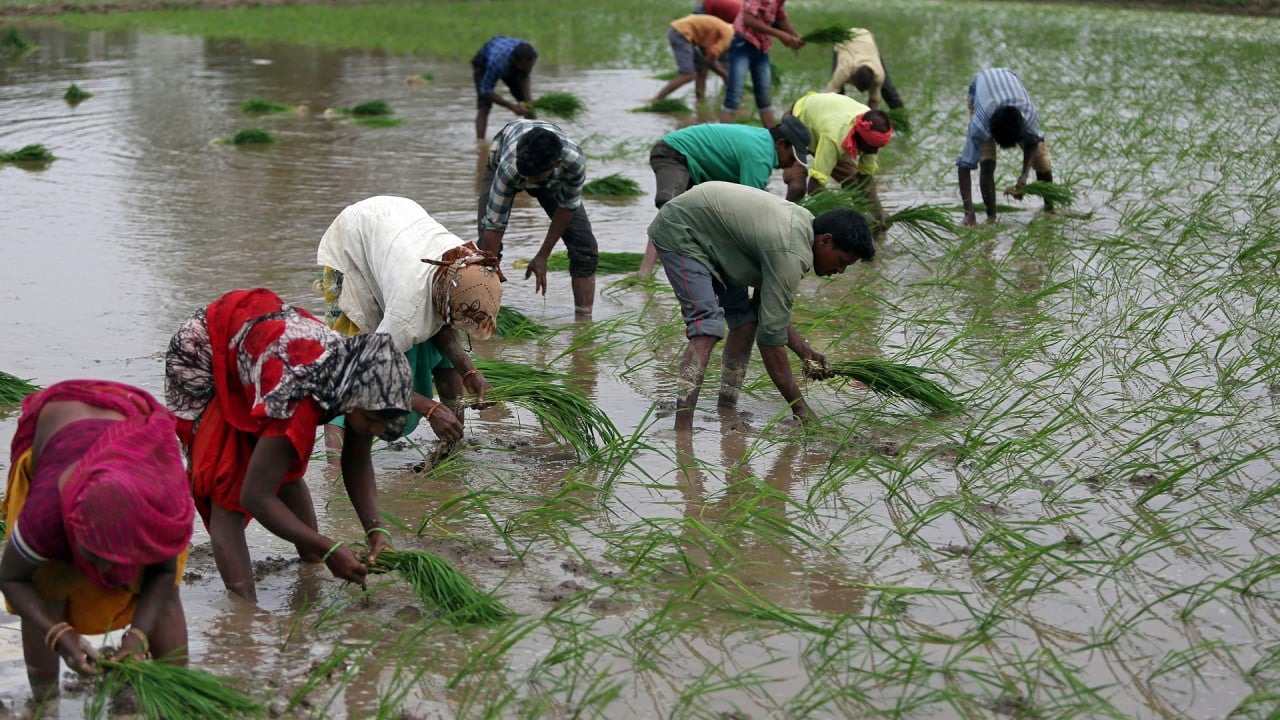
Indian farmers vow to continue fight for crop prices even as police use ‘immoral’ tear gas on protesters
- Farmers are rallying to hold the government accountable to its promise of a minimum crop price, and more, after similar protests in 2020
- PM Narendra Modi is defying protesters’ demands amid inflation fears, even as the protest threatens to sway the vote in an agriculture-dependent nation
Farmer Karamjeet Singh, 42, shows no signs of fatigue as he organises food arrangements for thousands of fellow farmers gathered at the Shambhu border of Punjab and Haryana. Since Tuesday, they have been on a mission to march to India’s capital city, New Delhi, to press for their demands.
The firing of tear gas by police did not dampen their spirits as they rallied to the call of two farming organisations for the “Delhi Chalo” movement, which aims to pressure India’s ruling Bharatiya Janata Party (BJP) government into meeting their demands, including legislation on Minimum Support Prices (MSP) for crops and loan waivers.
Protesters who spoke to This Week in Asia said they were of the view that authorities “favoured corporate interests and big capitalists”, leaving in limbo promises made in 2020 to farmers. With this segment forming a sizeable voter base ahead of the elections, the movement is politically significant.

Farmers from Punjab and Haryana commenced their march towards the capital on February 13. However, their entry into Delhi was thwarted as state authorities closed all entry points and blocked roads to prevent their access.
The initial clashes between police and the farmers had started at the Shambhu area of Ambala, situated on the border between Punjab and Haryana. Following the strategy of their Delhi counterparts, the Haryana police set up blockades to prevent protesters from advancing.
Police also dropped tear gas on the protesting farmers using drones, a move that legal experts called “immoral and illegal”.
India locks down capital as farmers mass over crop prices
Despite the challenges and rigorous barriers by state authorities, defiant farmers had congregated at the Ambala border, with some saying they “won’t give up”.
“If this is how our nation’s farmers are to be treated, then I have no qualms in stating that India is descending into autocracy,” said Singh, who owns 1.5 acres of agricultural land in Punjab.
The Indian government has reiterated its position, stating it cannot commit to implementing MSP. Another round of dialogue on Tuesday saw no progress, and three union ministers will meet farmer leaders via video conferencing this evening.
The Haryana government has suspended internet services in the state to maintain law and order and withheld access to many prominent X accounts belonging to farmer leaders.

Echoes of 2020
In 2020, Indian farmers launched one of the world’s longest protests against the BJP’s controversial agricultural reforms. Thousands gathered at Delhi’s borders, enduring harsh conditions and even Covid fatalities. Modi’s government eventually repealed the proposed farm laws in 2021 and agreed to address other farmer demands, including the MSP.
Protesters are also advocating for the termination of all free-trade agreements, citing concerns over the impact of international trade deals on domestic agriculture.
In India, the MSP guarantees farmers a stable income when the government purchases crops from farmers. This system acts as a safety net, ensuring farmers receive fair compensation for their produce, especially during periods of market volatility or when market prices plummet below the MSP threshold.
Although the MSP is officially designated for 23 crops, it is mostly followed for rice and wheat, the primary crops cultivated by farmers in Punjab. These crops are vital for India’s public distribution system, which relies on steady supplies.
Despite the MSP being higher than global prices for wheat and rice, farmers often express dissatisfaction, advocating for higher MSP rates to improve their income prospects.
Agriculture plays a vital role in the Indian economy, with over 70 per cent of rural households depending on it for their livelihoods. Contributing about 17 per cent of total GDP, agriculture also employs about 58 per cent of the population.
Global rice shortage, India’s export woes to worsen amid Red Sea attacks
“We are not willing to compromise on anything less than what was assured to us,” said Jagjit Singh Dallewal, the convenor of Bharat Kisan Union, ahead of talks with the government on Tuesday.
Darshan Pal, a senior leader of the farmers’ movement, said a prevailing sentiment among farmer unions was that “the government is endorsing a model that favours corporate interests and big capitalists, neglecting crucial issues within the agricultural sector”.
Pal stressed this imbalance had led to a distressing surge in farmer debt, with tragic consequences including suicides.
About 11,290 farmers across India committed suicide in 2022, according to data from the National Crime Records Bureau released on December 4 last year.
Pal said the core of the issue was in the inadequacy of prices paid to farmers for their produce, which is indispensable for sustaining their livelihoods and the agricultural industry.
“For the past two years, farmers have anxiously awaited policies ensuring MSP, as advocated by farming commissions. However, this prolonged delay only exacerbates their hardships, resulting in a myriad of challenges,” he argued.

Pal has noticed a shift in farmers’ attitudes towards their rights post-2020. “After the [2020] protests, farmers have become more cognisant and assertive of their rights. They have coalesced and formed robust unions across states.”
As India gears up for parliamentary elections in May, the BJP government is hoping to secure a third consecutive term in office. However, farmers believe that the government’s response to their demands will wield considerable influence over voting decisions across the country. With the elections looming, farmers are hopeful that the timing will compel the government to address their concerns.
Despite the political dynamics typical of election cycles, recent commitments from political figures, such as opposition leader Rahul Gandhi’s promise to uphold MSP if elected, indicate a growing recognition of farmers’ grievances.
Drought-hit Indian farmers’ fruitful pivot to ‘the only crop that can survive’
Bargaining room on MSP?
Among the demonstrators in northern India is Amardeep Singh, 39, a farmer who supports his family of eight.
“My uncle took his own life because, year after year, he struggled to repay the loans he had taken against his crops. Eventually, he was forced to sell half of his land to cover the expenses of his daughter’s wedding. The mounting pressure to repay his debts became unbearable, and last year, he succumbed to the weight of his financial burdens.”
The increasing costs of pesticides, coupled with the ongoing struggle to secure fair prices for their crops, have dampened the enthusiasm for agricultural practices among farmers, pushing many into debt.
Gurpreet Singh, 25, a Punjabi farmer, said the limited prospects for farming in India were forcing young Punjabis to forgo agricultural work and instead seek jobs abroad. “In Punjab, job consultancies are ubiquitous, as we believe this is the sole means of improving our livelihoods.”
Arun Kumar, an economist and author, said the government’s primary concern over establishing an MSP for all crops was the potential need for significant subsidies and increased crop procurement, which they feared could lead to inflation.
However, Kumar believes these concerns are unfounded. He argues that providing MSP for all crops would be beneficial for the environment, reducing surplus stocks and imports.
Kumar suggests that the government’s reluctance to implement MSP for all crops stems from its desire for cheap labour to benefit businesses and the elite. This, he says, perpetuates inequality and protects vested interests.
“Maintaining the living standards of the elite at the expense of low wages and farm incomes is unjustifiable,” he said.
The author said the current system focused on only a few crops, leading to overproduction of wheat and rice and environmental damage in water-scarce areas like Punjab and Maharashtra. “Diversifying crops could reduce subsidies, benefit the environment, and lower import bills,” he explained.

Contrary to the misconception that implementing MSP for all crops would require procuring the entire harvest, he clarifies that MSP is a floor price; procurement only occurs when market prices fall below it.
Jayati Ghosh, an Indian development economist said the government had clearly decided it would not give in to farmers’ long-standing demand of MSP, even though they had more or less agreed to it to get the farmers to give up their earlier protest two years ago.
She said the MSP demand could actually be fulfilled, as it did not mean the government would purchase all crops, but simply that authorities had to intervene whenever market prices fell below a predefined level.
“This can happen if there is domestic overproduction for any reason, or because of international price movements. But even if the government does buy the crop in cases of such a shortfall, it can then sell these in the market or export them, so it will recoup some of the amount spent,” she said.
‘Floating in tears’: Indian farmers sing of loss from ‘cruel’ climate crisis
The analyst said farming in India was grappling with a profound crisis as cultivation costs had surged over time while crop prices had failed to keep pace. With over half of India’s population reliant on agriculture for their livelihoods, this fragility poses a significant threat. “Agriculture’s financial viability is increasingly in question, given that prices for many crops are plummeting below production costs.”
Ghosh discussed the risks farmers faced, ranging from unpredictable weather patterns and emerging pests to the looming spectre of climate change. Obstacles in accessing credit and essential inputs further compound their challenges. Among these risks, price volatility is a significant threat, with fluctuations driven by global market dynamics.
“Reducing this risk is paramount, not only for the welfare of farmers but also for the broader national economy. Preserving India’s food sovereignty hinges on ensuring the viability of agriculture and affording farmers a minimally decent standard of living.”



